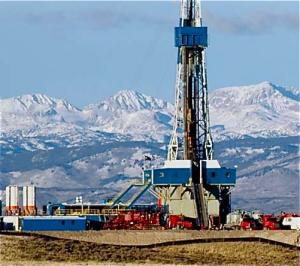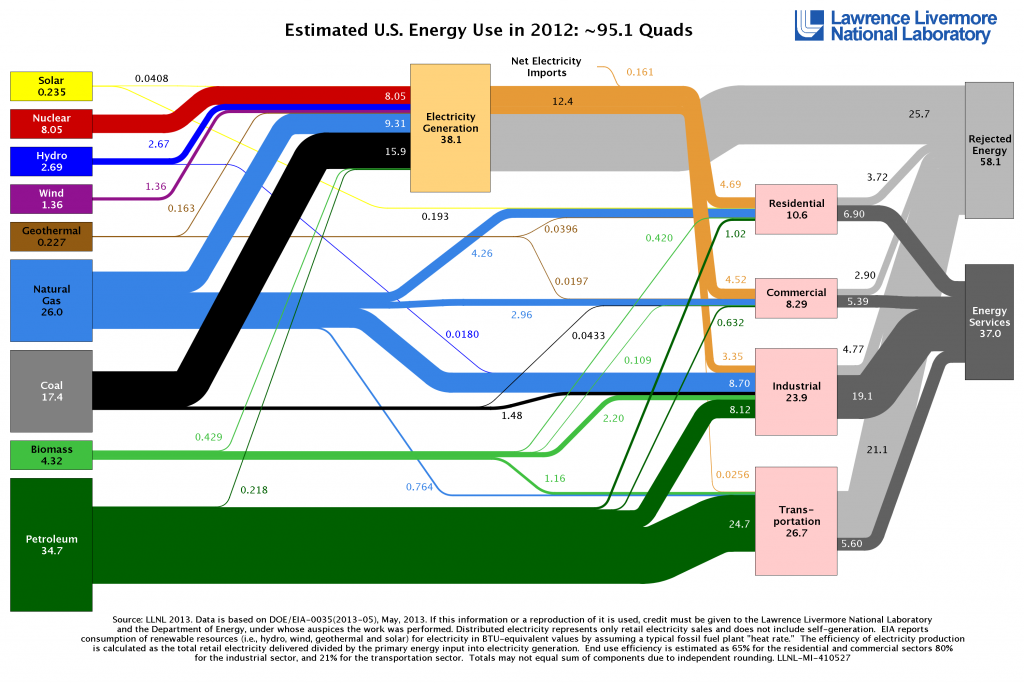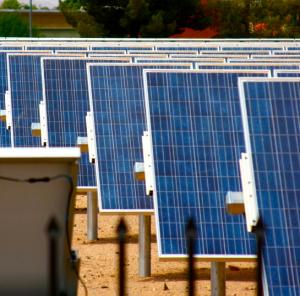
Welcome to fracking 2.0, the next energy generation! Americans used more natural gas, solar panels and wind turbines, and less coal to generate electricity in 2012, according to the most recent energy charts released by Lawrence Livermore National Laboratory (LLNL) in a yearly statistical forensic that tracks the nation's energy consumption (see chart below).
As part of a continuing trend, it's no surprise that natural gas use is up year over year - particularly in the electricity sector where it has been substituted directly for coal. Sustained low natural gas prices have prompted the shift, according to A.J. Simon, an LLNL energy systems analyst. Some observers note another factor, although not yet significant: natural gas turbines' ability to play nice with the intermittent renewables coming online in greater numbers (LLNL press release).
Wind had the highest gains
According to Simon, the rise of the renewables (which sounds like another low budget, Syfy, Sharknado) is tied to prices (the underlying costs of solar panels and wind turbines have gone down while productivity is up) and policy (government incentives to equipment installers or renewable energy targets).

The statistic that keeps utility execs up at night burning the midnight oil: Americans used 2.2 quadrillion BTU, or quads, less in 2012 than the previous year. Once considered a recession-era fluke, this trend has stubbornly persisted.
Once again, wind power saw the highest percentage gains, going from 1.17 quads produced in 2011 up to 1.36 quads in 2012. New wind farms continue to come on line with bigger, more efficient turbines that have been developed in response to government-sponsored incentives to invest in renewable energy.
Four nuclear plant closures
Solar also jumped from 0.158 quads in 2011 to 0.235 quads in 2012. Extraordinary declines in prices of photovoltaic panels, due to global oversupply, drove this shift.
This is the first year in at least a decade where there has been a measurable decrease in

nuclear energy. "It is likely to be a permanent cut as four nuclear reactors recently went offline (two units at San Onofre in California as well as the power stations at Kewaunee in Wisconsin and Crystal River in Florida)," Simon said. "There are a couple of nuclear plants under construction, but they won't come on for another few years." The industry is still waiting to see if small modular reactors will reverse this trend in the future.
Coal and oil use dropped in 2012 while natural gas use jumped to 26 quads from 24.9 quads the previous year. There is a direct correlation between a drop in coal electricity generation and the jump in electricity production from natural gas. This fossil fuel tango isn't over yet, as we hit the halfway mark in 2013.
The majority of energy use in 2012 was used for electricity generation (38.1 quads), followed by transportation, industrial, residential and consumption. However, energy use in the residential, commercial and transportation sectors decreased while industrial energy use increased slightly.


